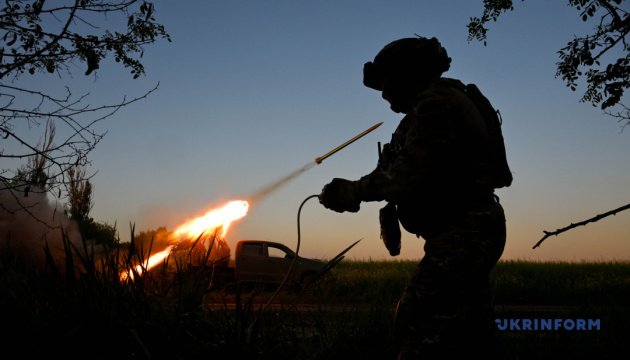Ukraine’s struggle is a dramatic poem without an ending — every generation writes a new stanza
To mark Ukraine’s Independence Day, Ukrinform presents a photographic chronicle of the nation’s unbroken fight for freedom — from the 1990s to today’s fiery days.
The agency’s archival photos capture three decades of vivid documentary evidence. They show the nation’s transformation: from posters at anti-Soviet rallies to the roar of a howitzer speaking on behalf of all Ukrainians in the war with Russia. From the “Revolution on Granite,” when students protested on the cold stones of the Maidan, to the “Revolution on Cardboard,” which turned fragile paper shields into bastions of freedom. From the first attempts to remove the rust of communist symbols to the final farewell to the phantoms of empire in the latest wave of decommunization.
This collection presents panoramic views of the Maidan square where different generations defended their liberty. It features the protests in Donetsk in 1991, still unsure of their own strength, and the barricades of the Revolution of Dignity, full of courage and resolve under the grand blue-and-yellow flag.
Ukrainians have come a long way — from chanting slogans demanding to break free from the Soviet Union…
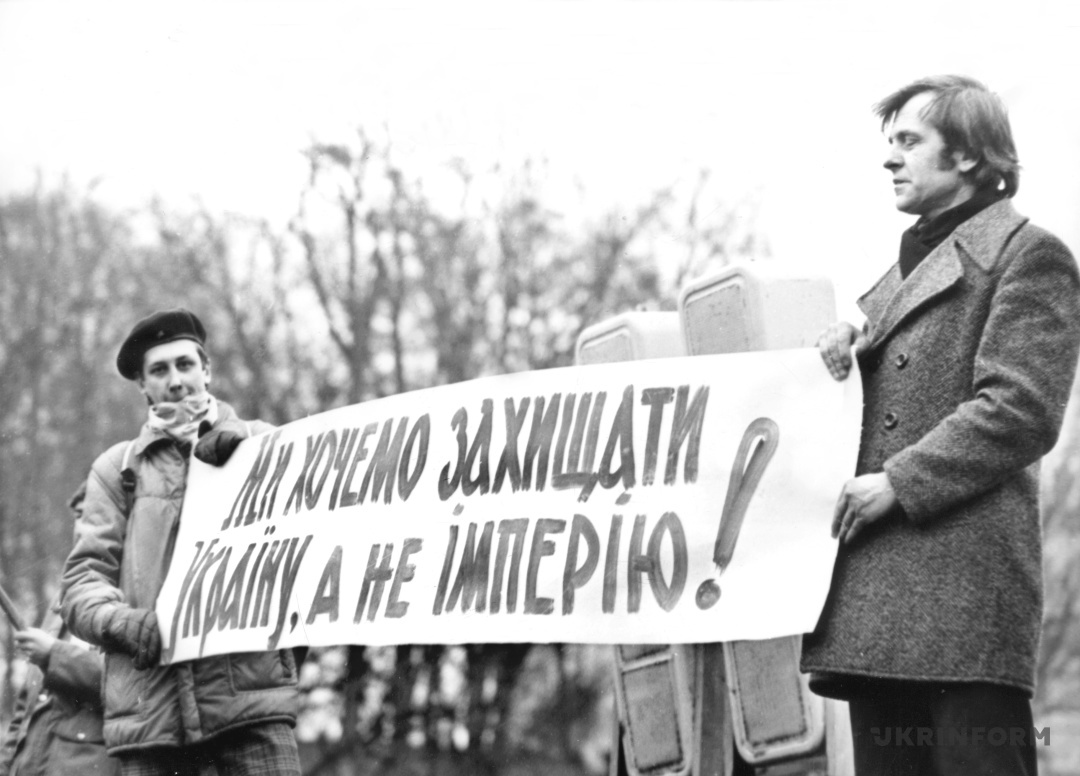
Participants in a picket with the slogan “Soviet Army – Occupying Army” at Independence Square (then October Revolution Square), Kyiv, February 4, 1990. Photo by Anatoliy Kolesnyk
…to today’s struggle, where every day and every photo is living testimony that freedom is always won with blood, pain, and resilience.
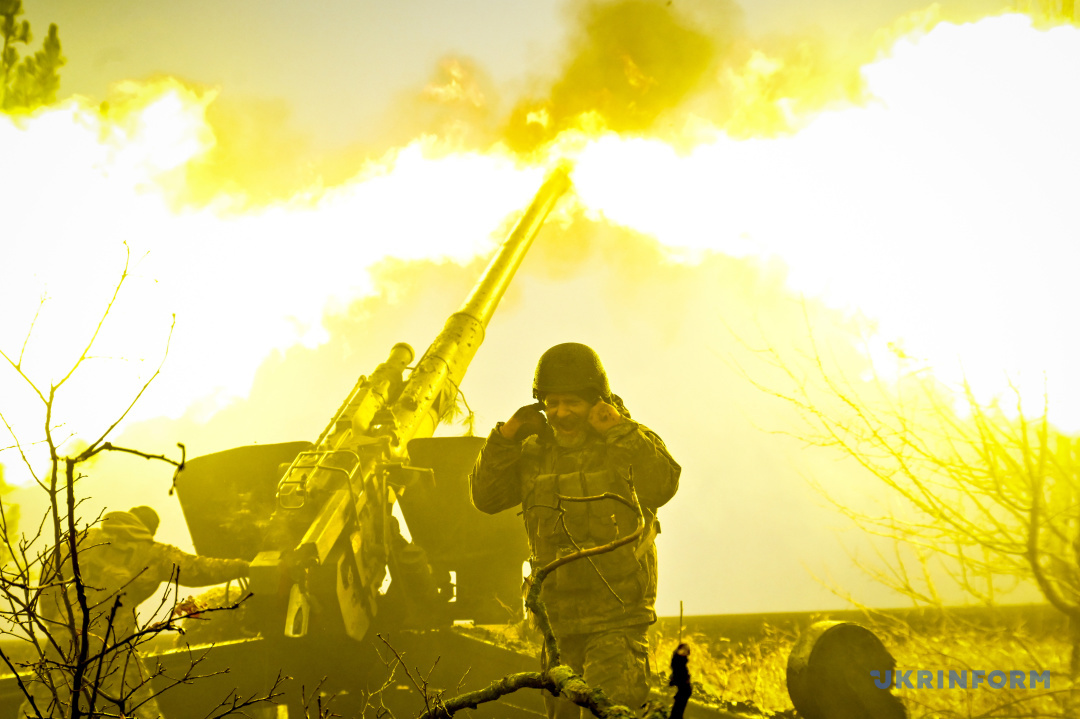
Ukrainian artillerymen fire a towed Msta-B howitzer during the Russian-Ukrainian war, Zaporizhzhia region, December 16, 2022. Photo by Dmytro Smolienko
Ukrainian youth – the fire of change. Young people are always the first to challenge the system. Students were the ones who rose against the empire unarmed, armed only with their desire for change, truth, and freedom. October 1990. October Revolution Square, Kyiv – the heart of the city becomes the heart of freedom. From October 2 to 17, students fasted, laying the granite foundation for a new state. This protest entered history as the Revolution on Granite.
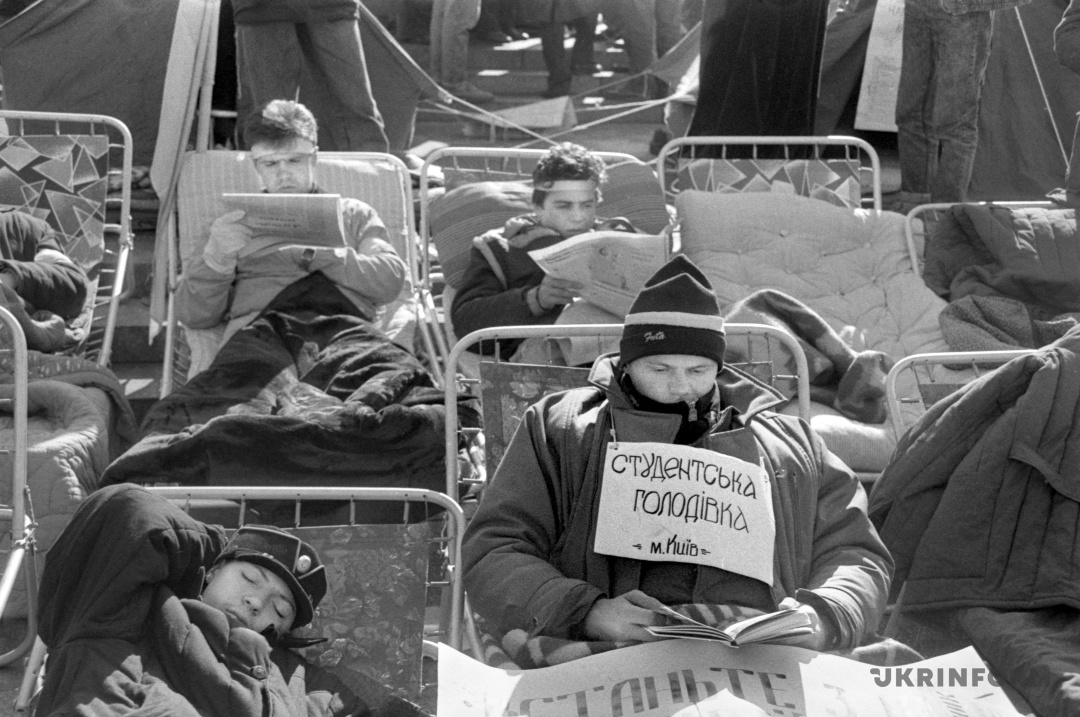
Participants of the student hunger strike at Independence Square (then October Revolution Square) during the Revolution on Granite, Kyiv, October 1990. Photo by Volodymyr Samokhotskyi
Summer 2025. Young people take to the streets again. Their shields are not iron but cardboard, now a language of resistance.
Their weapons are not stones but words. Freedom is once again the main slogan on the square. Social media have dubbed these events the “Revolution on Cardboard.” The protest was against attempts to curtail the independence of anti-corruption agencies – NABU and SAPO.
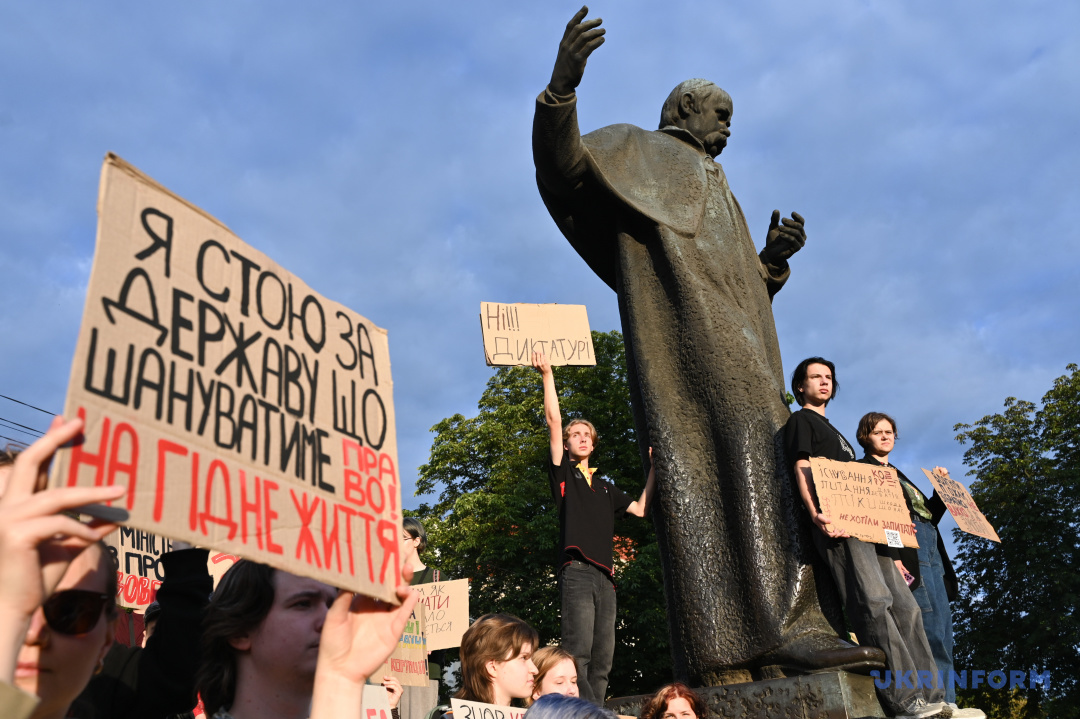
Activists hold posters during a rally supporting the independence of NABU and SAPO at the square near the Taras Shevchenko monument, Lviv, July 30, 2025. Photo by Anastasiia Smolienko
Resistance and determination have always defined Ukrainians in their quest for freedom, even when confronting overwhelmingly superior forces.
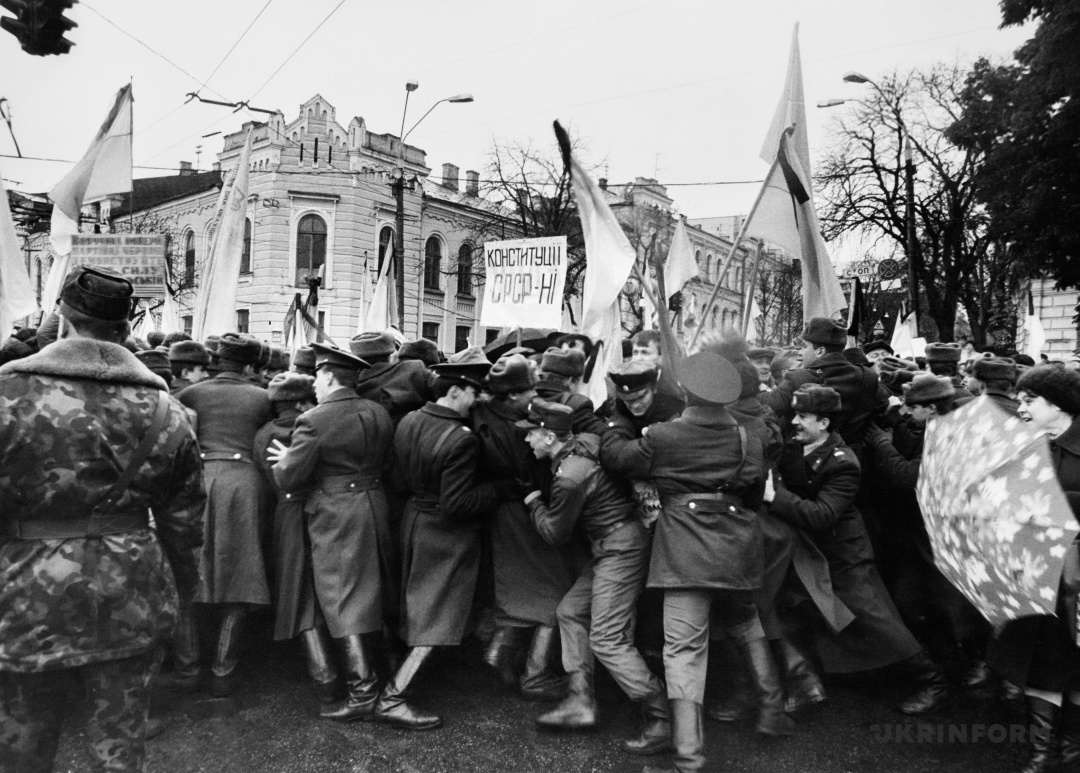
Police hold back opponents of the 73rd anniversary celebration of the October Revolution, Kyiv, November 7, 1990. Photo by Oleksandr Malakhovskyi
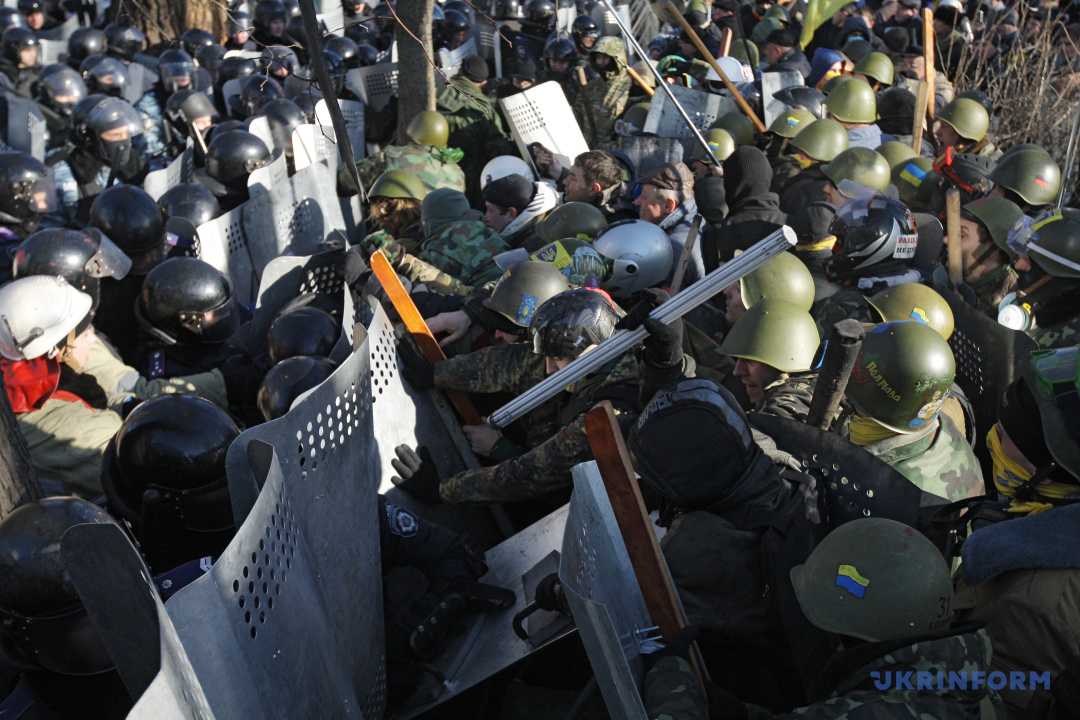
Clashes between protesters and security forces on Hrushevskoho Street during the Revolution of Dignity, Kyiv, February 18, 2014. Photo by Oleg Petrasiuk
In the early 1990s, so-called law enforcement could restrain activists…

Protesters and police on the day the blue-and-yellow flag was raised over the Supreme Soviet of the Ukrainian SSR, Kyiv, September 4, 1991. Photo by Valerii Soloviov
…but more than twenty years later, the confidence and inner strength of the Ukrainian people had grown even stronger.
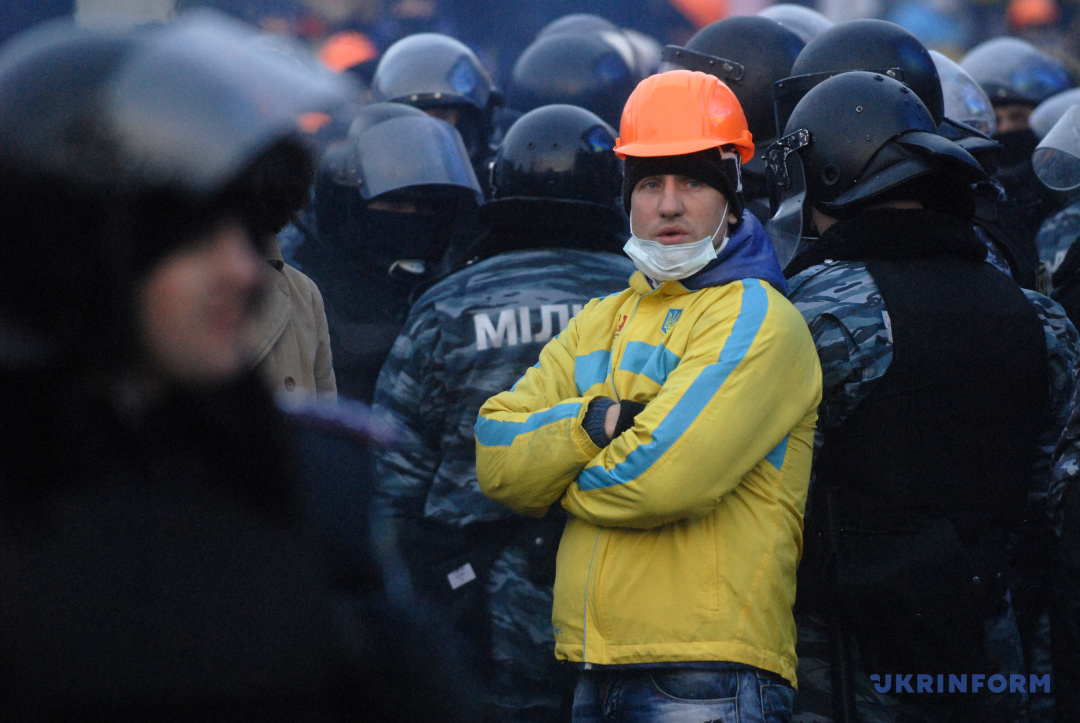
Protester and security forces during the Revolution of Dignity, Kyiv, December 11, 2013. Photo by Oleg Petrasiuk
Independence Square – the heart of freedom. This square is more than the center of the capital; it is the altar of history. Here, the spirit of freedom rose three times: the Revolution on Granite (1990), the Orange Revolution (2004-2005), and the Revolution of Dignity (2013-2014).
Each was like the breath of a new Ukraine, each a fire that burned imperial chains.
In the photo below – October 1990. The Maidan still bears the name of the October Revolution, but it is already giving birth to its own – a Ukrainian one. A student tent encampment on the cold stone.
Hunger, youth, and faith – from granite grows a state.
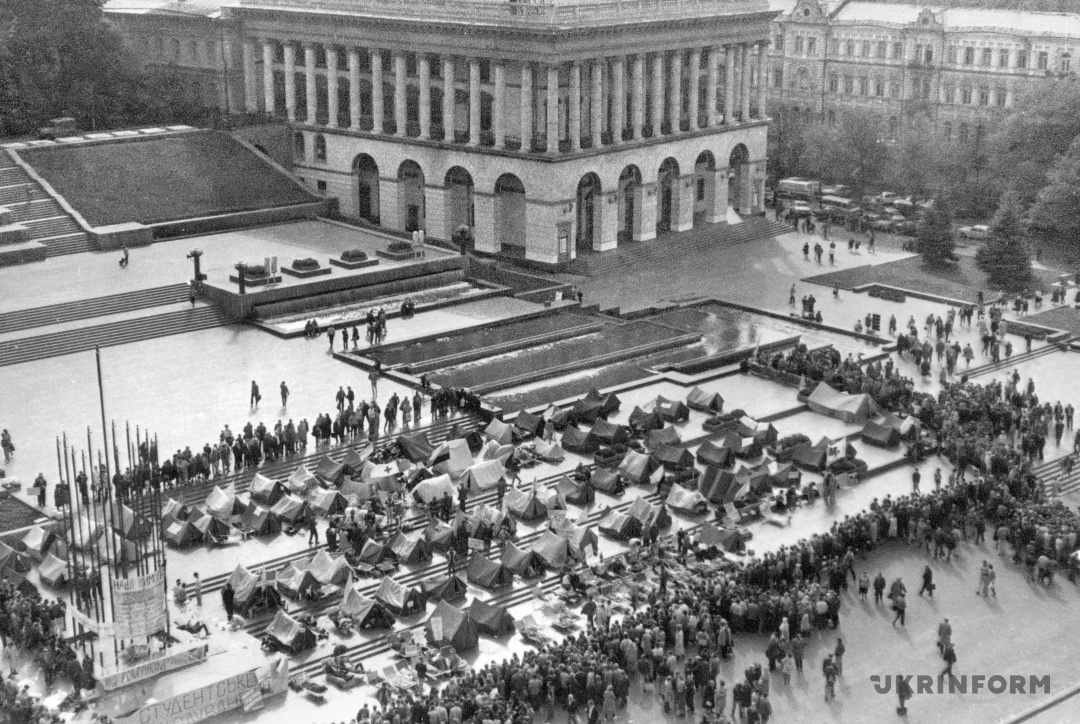
Student hunger strike camp at Independence Square (then October Revolution Square) during the Revolution on Granite, Kyiv, October 1990. Photo by Oleksandr Malakhovskyi
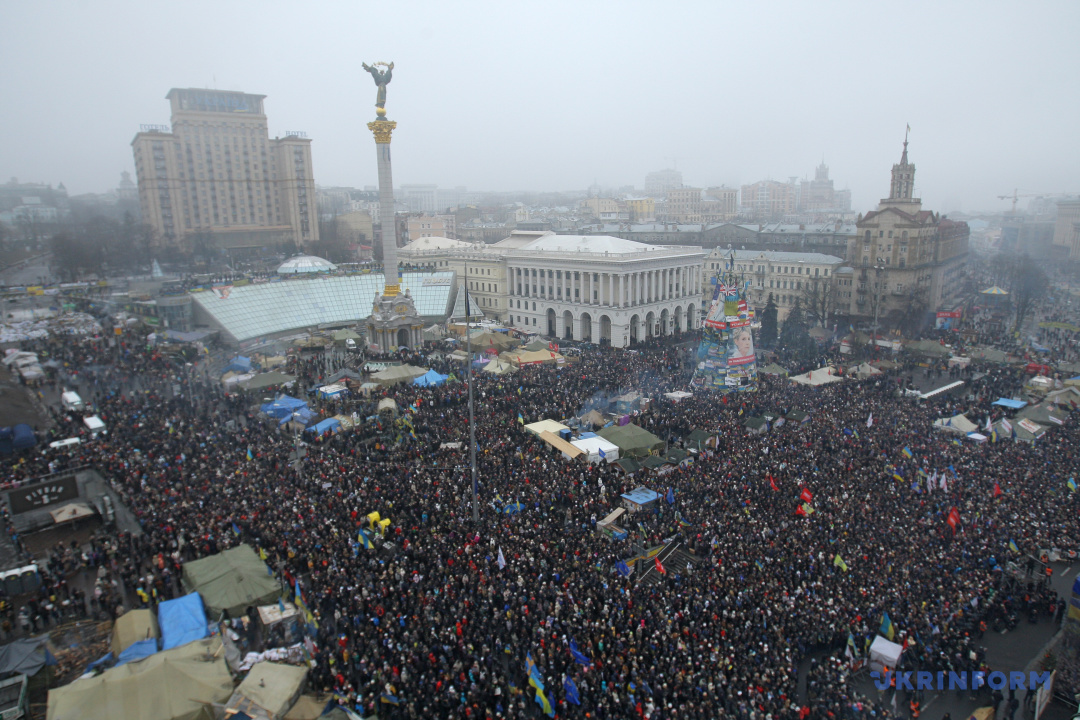
Participants of another public assembly at Independence Square during the Revolution of Dignity, Kyiv, February 9, 2014. Photo by Oleg Petrasiuk
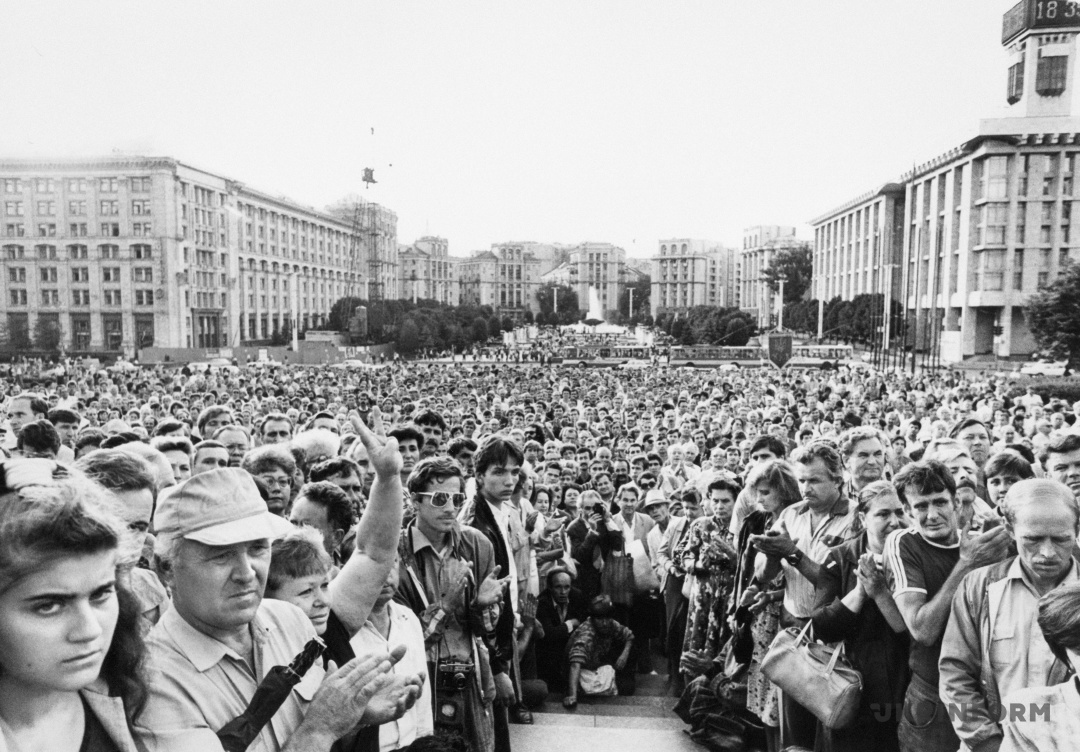
Large rally at Independence Square (then October Revolution Square) during the August 1991 USSR coup, which triggered the adoption of an Act of Declaration of Independence of Ukraine, Kyiv, August 22, 1991. Photo by Volodymyr Repik
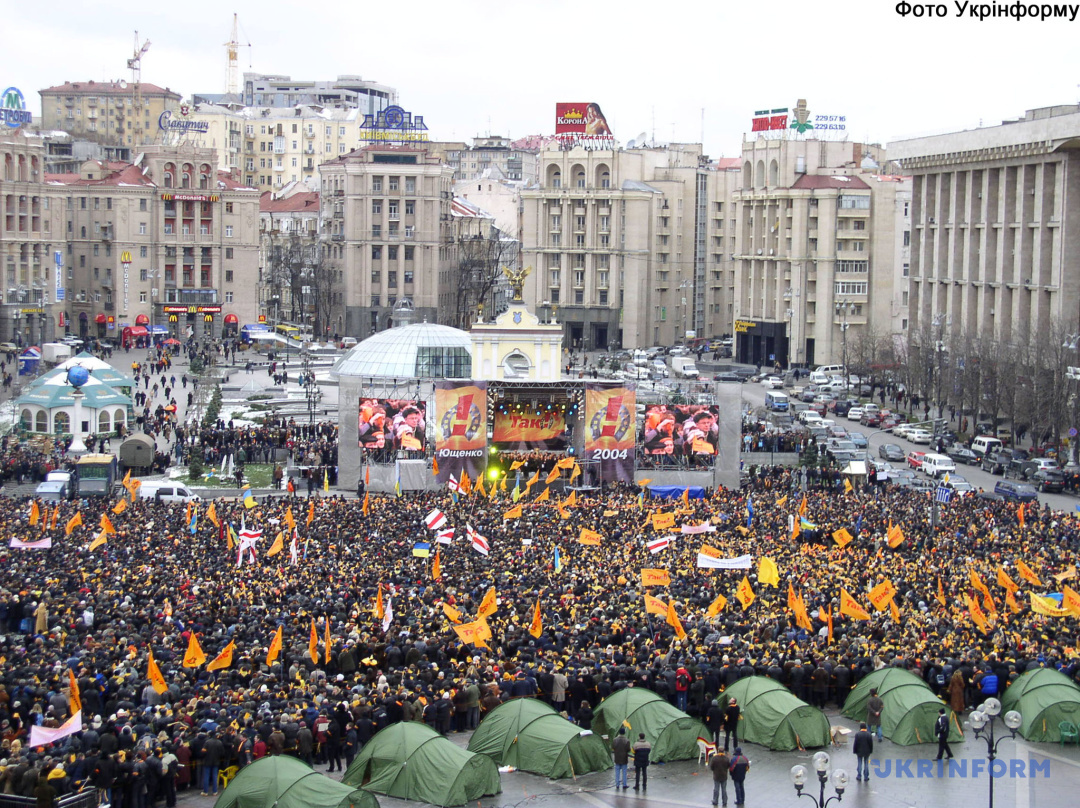
Mass rally in support of Viktor Yushchenko during the Orange Revolution at Independence Square, November 22, 2004, Kyiv. Photo by Oleksii Ivanov
On August 24, 1991, the day the Declaration of Independence of Ukraine was adopted, the blue-and-yellow flag waved in front of the parliament, where the extraordinary session of the 12th convocation of the Supreme Soviet of the Ukrainian SSR took place.
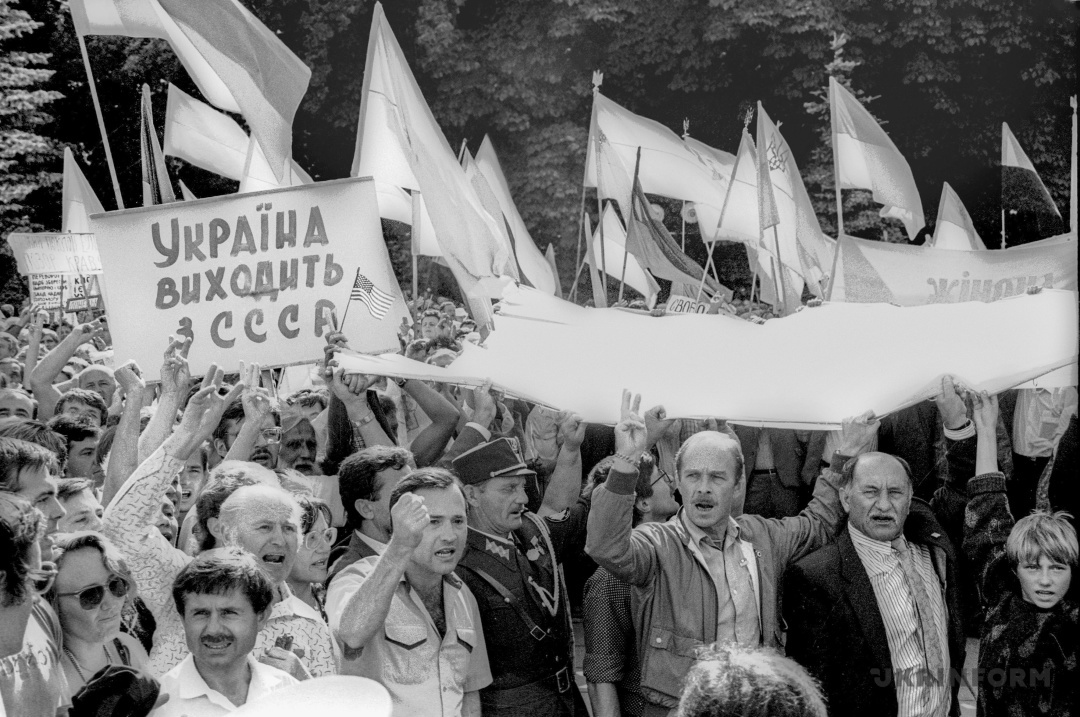
Photo by Volodymyr Repik
Two decades later, the EU flag joined it as a symbol of Ukrainians’ steadfast commitment to European integration.
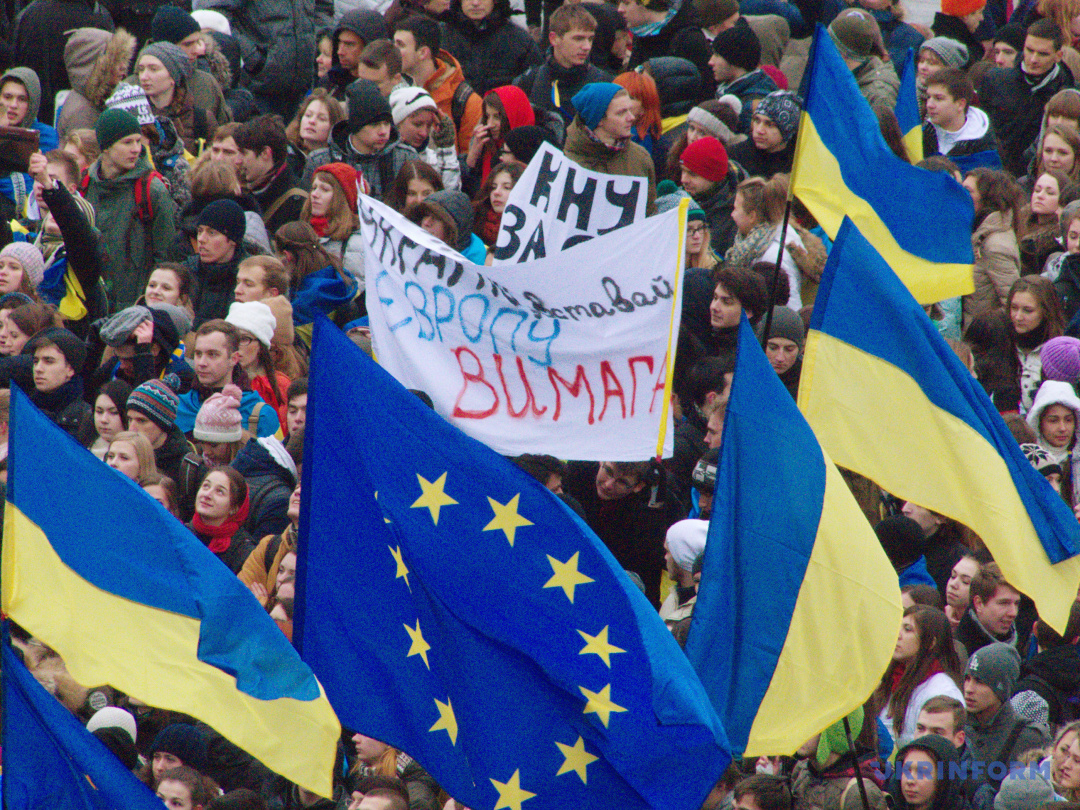
Activists during Euromaidan anti-government protests, Kyiv, November 26, 2013. Photo by Volodymyr Falin
During the collapse of the Soviet Union, Ukraine began removing elements of communist ideology from its symbolic space.
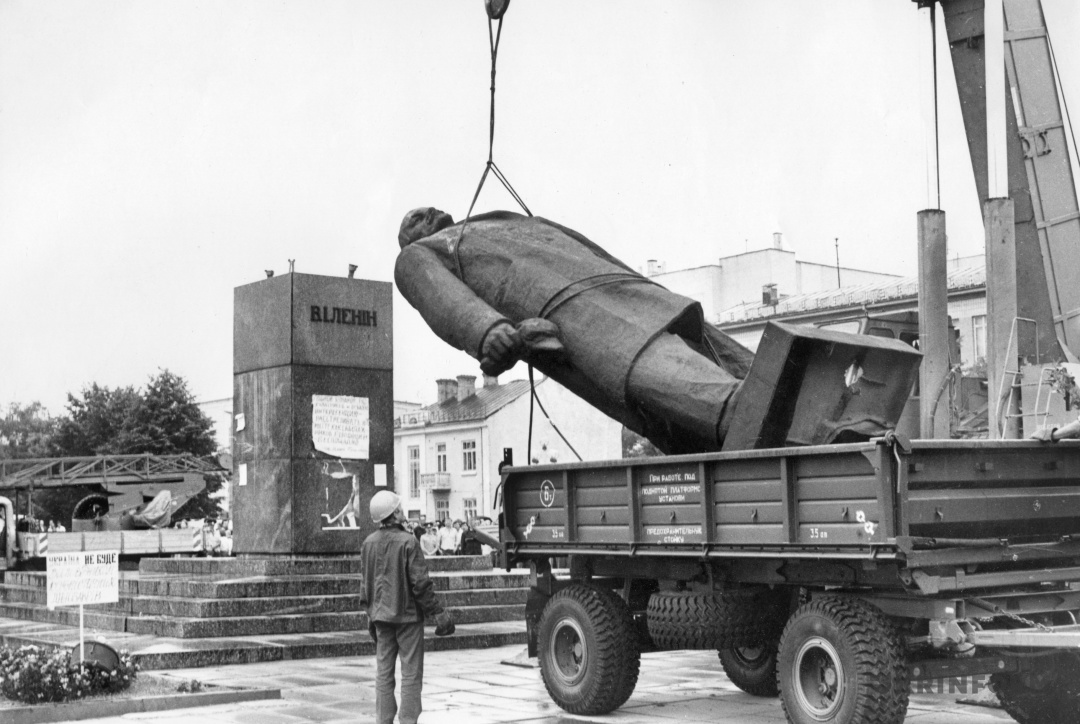
Dismantling a Lenin monument following the Presidium of the Supreme Soviet of the Ukrainian SSR decree temporarily suspending the Communist Party of Ukraine, Rivne, August 25, 1991. Photo by Pavlo Zdorovylo
The Ukrainian parliament legalized decommunization in 2015, including the removal of monuments linked to the Soviet past.
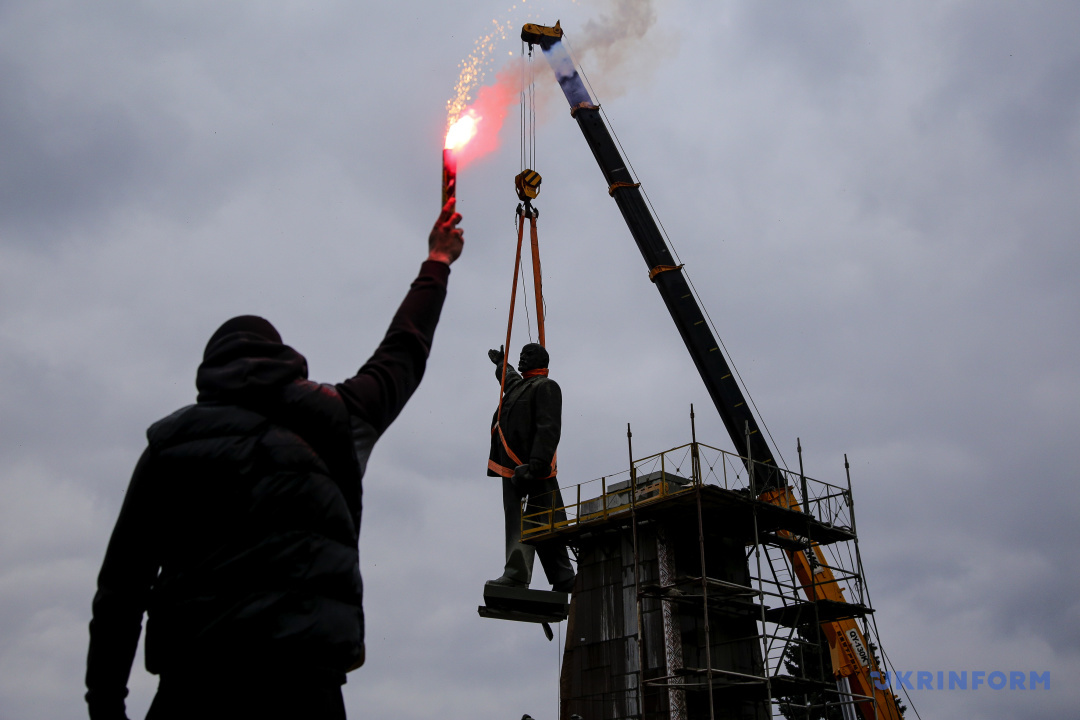
Activist with a torch during the dismantling of a Lenin monument, Zaporizhzhia, March 17, 2016. Photo by Dmytro Smolienko
Ukraine’s path to independence was not easy. The country gave up nuclear weapons in exchange for security guarantees that ultimately failed.
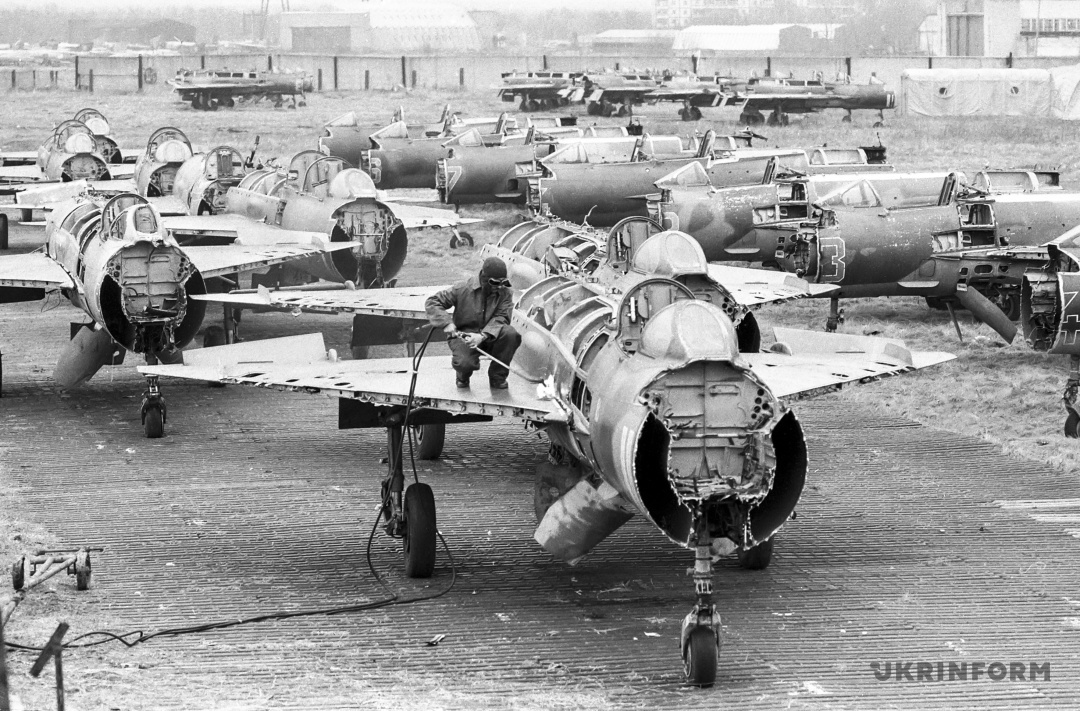
Destruction of MiG-21 and MiG-23 aircraft at an airbase under the Treaty on Conventional Armed Forces in Europe, December 1993. Photo by Valerii Soloviov
However, 30 years later, Ukraine developed its own modern weaponry. For example, the Vampire drone bomber, equipped with a thermal camera and capable of carrying up to 15 kg.
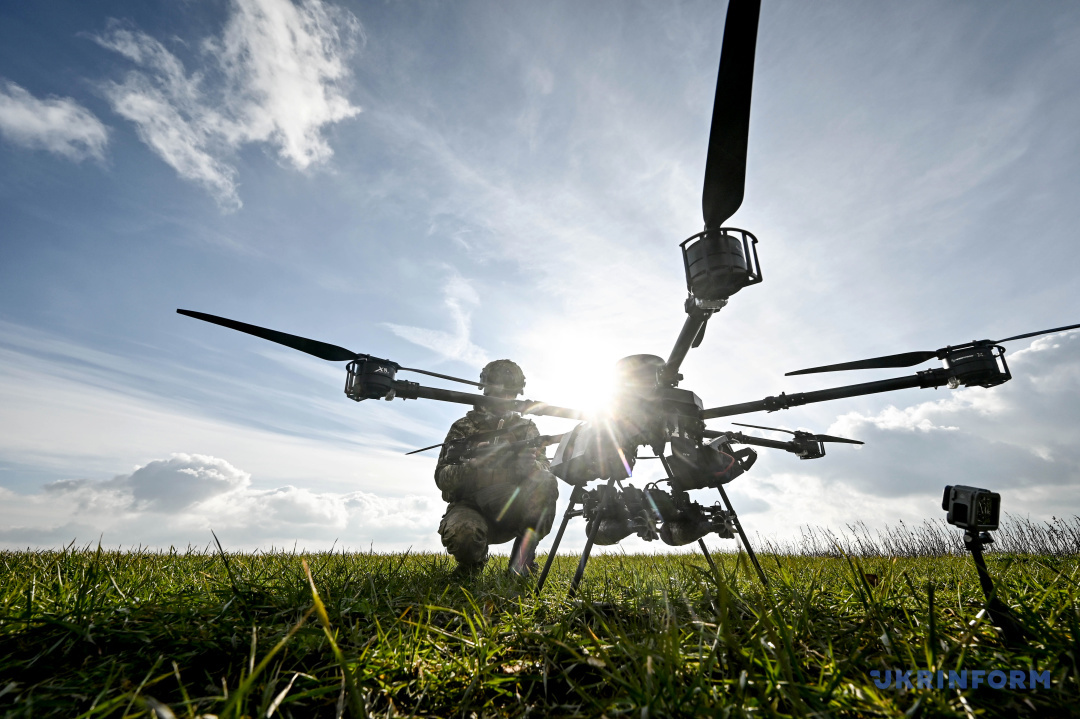
Serviceman from the strike drone platoon “Vykhor. Dnipro” of the 108th Territorial Defense Brigade demonstrates launch of the Ukrainian-made Vampire hexacopter, Zaporizhzhia region, February 2, 2024. Photo by Dmytro Smolienko
The history of Ukrainian independence is a complex path of struggle and achievement.
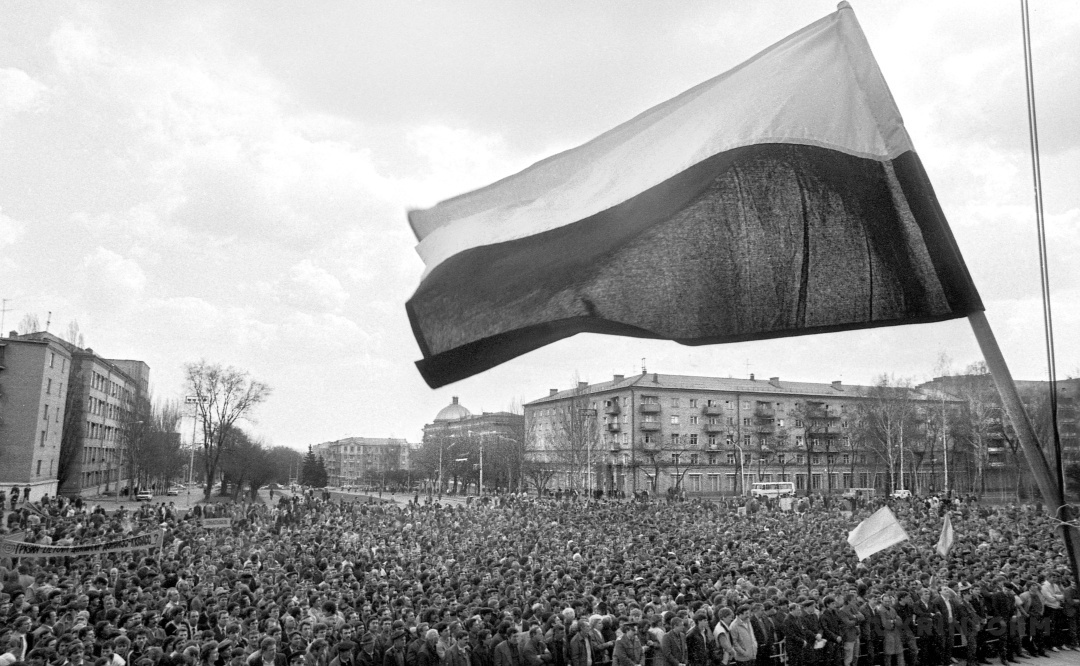
Miners during a large rally demanding political and economic reforms, Donetsk, 1991. Photo by Ihor Brui
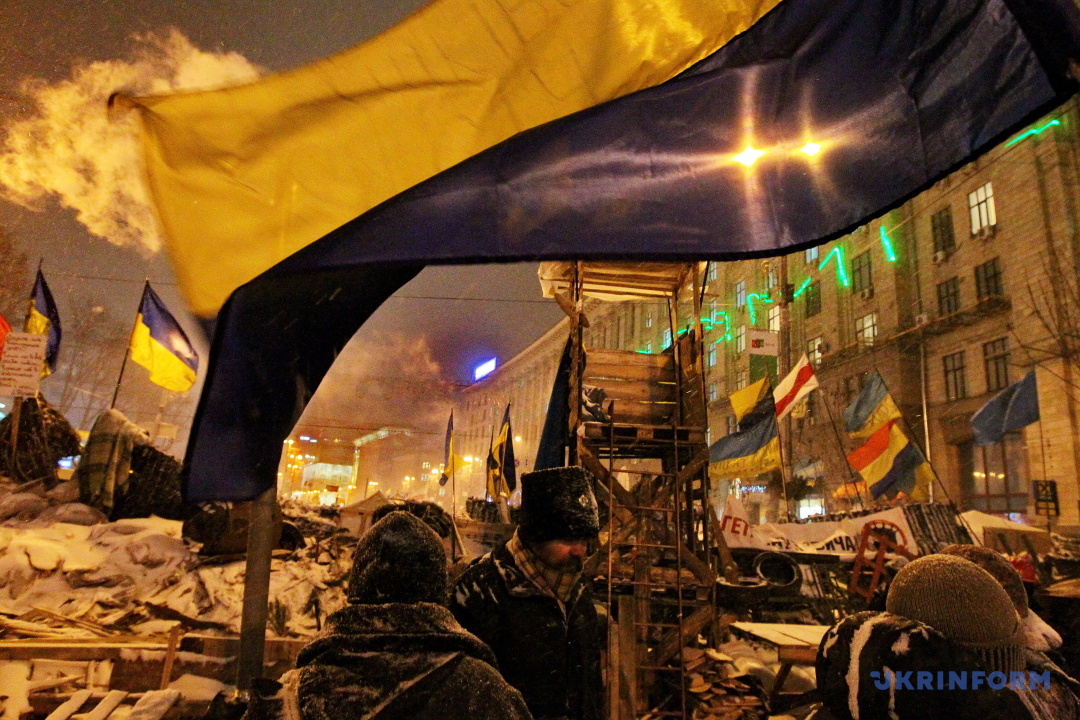
People by barricades during the Revolution of Dignity, Kyiv, January 21, 2014. Photo by Pavlo Bahmut
The guiding principles for Ukrainians on this path have always been freedom, dedication, and dignity, from east to west and north to south.

